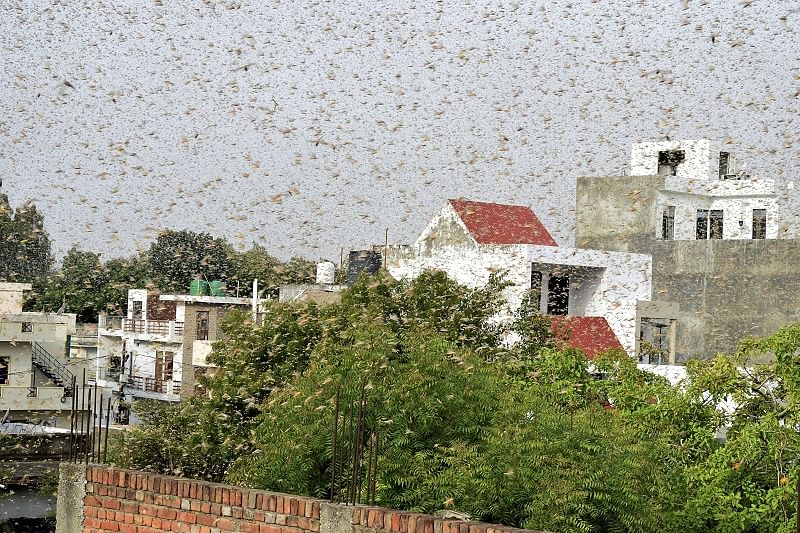
In view of the warning regarding potential intense attacks in several districts after July 22, the Haryana government has stepped up efforts to control locust swarms which cause crop damage, Additional Chief Secretary, Agriculture Department, Sanjeev Kaushal said here on Thursday.
He said that among other measures, arrangements were being made to stock additional quantities of pesticide.
Agriculture Minister J P Dalal directed to set up a task force in each district to monitor all the arrangements during the attack.
Dalal gave these directions here during a review meeting with the officials regarding preparations made to deal with the locust attack.
He said that the locust swarms should be constantly monitored and asked the officers of the Administration and Agriculture department to stay alert.
Kaushal said that locust swarms in the region had become resistant to some commonly used pesticide and to prevent homogeneity in use of pesticides during repeated spraying, arrangements are being made to stock 20,000 litres of lambda-cyhalothrin in addition to existing stocks of pesticide.
Kaushal said that three drones were being purchased for an aerial spray of pesticide. As many as 66 fire brigade vehicles were available, as well as 3,540 tractor-mounted spray pumps.
The state government would also acquire fogging machines being bought by the Centre from the United Kingdom for use on trees, he said.
Locust Warning Organisation has warned of more high-intensity attacks in districts Nuh, Rewari, Mahendragarh, Bhiwani, Charkhi Dadri after July 22, after large-scale locust breeding was observed in Jhunjhunu district of Rajasthan, he said.
“These attacks are likely to be far more severe than the ones that have already occurred over 13,038 acres in Jhajjar, Charkhi Dadri, Palwal, Sirsa, Nuh, Rewari, Bhiwani and Narnaul districts between June 26 and July 16,” said Kaushal.
Notably, the locusts entered Sirsa, Bhiwani, Charkhi Dadri, Nuh and Mahendragarh districts on Saturday, with some settling in the fields during the night before moving away from Haryana.
Kaushal said that the preparatory measures put in place by the officials of the department had prevented significant losses in most districts during these attacks.
Farmers in Jhajjar, Palwal and Nuh districts did not report any losses due to damage to crops by locust swarms. While farmers in most districts suffered losses to the tune of five to ten per cent, quick action by officials of the department ensured that those in the worst-hit districts of Rewari and Sirsa did not suffer losses of more than 30 per cent, he said.
Kaushal assured that the department was closely monitoring the situation and urged farmers in the affected districts to stay alert and inform the officials if they found locusts anywhere.
Three weeks ago, a huge swarm of locusts had reached Rewari from neighbouring Rajasthan. While a part of the swarm settled overnight in the district, the remaining headed towards Gurgaon the next morning and eventually moved towards Uttar Pradesh.
Notably, Haryana had issued a high alert over a month ago after locust swarms attacked crops in Rajasthan and a few other states, but the insects had moved away from the state.
Locusts, popularly known as ''tiddi dal'', are short-horned grasshoppers with highly migratory habits and voracious feeding behaviour.
This insect can eat more than its body weight. One square kilometre of locust swarm containing around 40 million locusts can eat as much food in a day as 35,000 people.